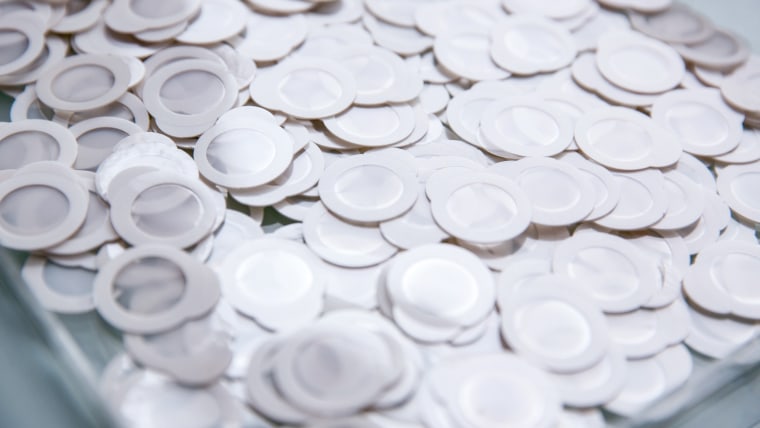There’s more evidence that a wearable patch may help kids with peanut allergies, researchers said Wednesday.
About half the kids who tested the patches were able to eat more peanut products than kids wearing a dummy patch, the researchers reported.

But only younger kids were helped — those under 11.
They called the results “modest,” but they add to a growing body of research showing that there are various ways to reduce the danger that a child who is allergic to peanuts will go into a potentially deadly anaphylactic shock.
“To avoid potentially life-threatening allergic reactions, people with peanut allergy must be vigilant about the foods they eat and the environments they enter, which can be very stressful,” said Dr. Tony Fauci, director of the National Institute of Allergy and Infectious Diseases, which helped pay for one study.
Some schools have banned all peanut products, and the Food and Drug Administration regularly issues alerts about foods that contain peanuts without having warning labels.
Related: To fight peanut allergies, give peanuts to babies
So, many groups of researchers are looking for ways to desensitize both children and adults with peanut allergies.
The peanut patch delivers proteins from peanuts through the skin — an approach called epicutaneous immunotherapy. The idea is to train the immune system to recognize peanut proteins as safe, so that it doesn't go into overdrive and cause anaphylaxis, which comes on suddenly and can kill unless patients get immediate medication such as epinephrine.
The team tested 74 children and young adults, aged 4 to 25, giving them either a low-dose patch, a high-dose patch, or a placebo patch to wear.
The patch, called Viaskin, is made by DBV Technologies and is not FDA approved.
After a year, just under 50 percent of the volunteers given the low-dose or high-dose patch were able to tolerate eating 10 times more peanut protein than before they got the patches, the team reports in the Journal of Allergy and Clinical Immunology. Just 12 percent of those wearing a dummy patch could tolerate more peanut protein.
“The effect of treatment was more evident in the younger age group, with little or no effect demonstrated in participants older than 11 years,” the team, led by Stacie Jones of the University of Arkansas for Medical Sciences, wrote in its report.
Separately, the company said in a news release this week that another trial showed benefits three years later in 18 patients who first tested the patches. It did not continue to help all the children, but seven of the 18 tolerated increasingly large doses of peanut protein, the team said.
One of the researchers, Dr. Hugh Sampson of the Icahn School of Medicine at Mount Sinai in New York, is also chief scientific officer fot DBV Technologies.
Related: Babies given peanut early have fewer allergies
Other research groups are giving kids oral doses of peanuts or peanut protein to try and help them develop tolerance, but not all children do well, said NIAID’s Dr. Daniel Rotrosen. “Epicutaneous immunotherapy aims to engage the immune system in the skin to train the body to tolerate small amounts of allergen, whereas other recent advances have relied on an oral route that appears difficult for approximately 10 to 15 percent of children and adults to tolerate,” Rotrosen said.
The kids in the patch study all wore it daily with no serious reactions. The NIAID, part of the national Institutes of Health says that shows it’s a viable treatment option.
“Additional studies in larger groups of children are needed before the therapy could be approved for wider use,” NIAID cautioned.
Related: New treatment may help kids with peanut allergies
About 5 percent of U.S. children and 4 percent of adults have true food allergies, the American College of Allergy, Asthma and Immunology says.
“And while it was previously believed that an allergy to peanuts was lifelong, research by the National Institutes of Health shows that about 20 percent of individuals with a peanut allergy eventually outgrow it,” the College says in a statement.
The American Academy of Pediatrics says 90 percent of food allergies in children are caused by six foods: milk, eggs, peanuts, tree nuts, soy, and wheat. Peanuts, however, are the food most likely to cause anaphylaxis.